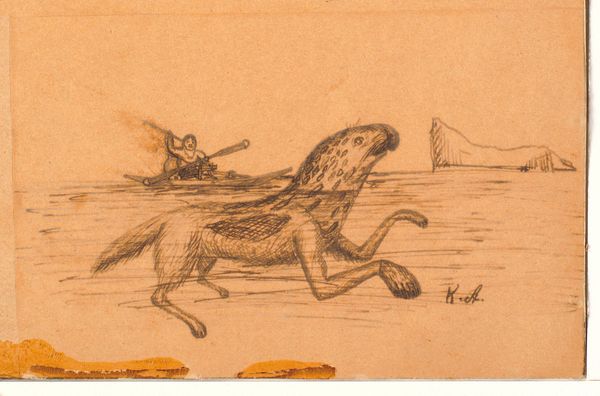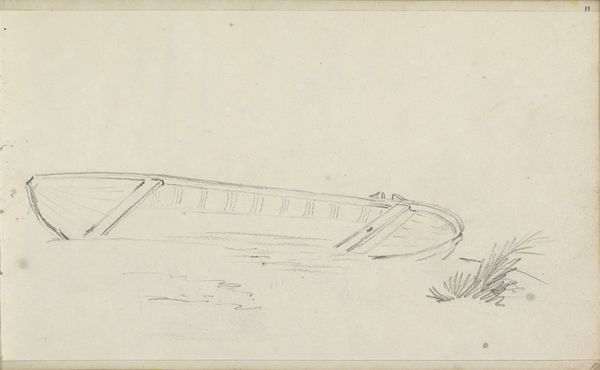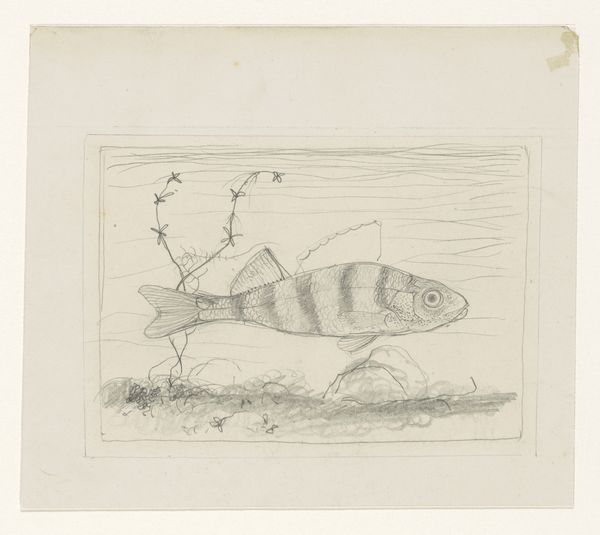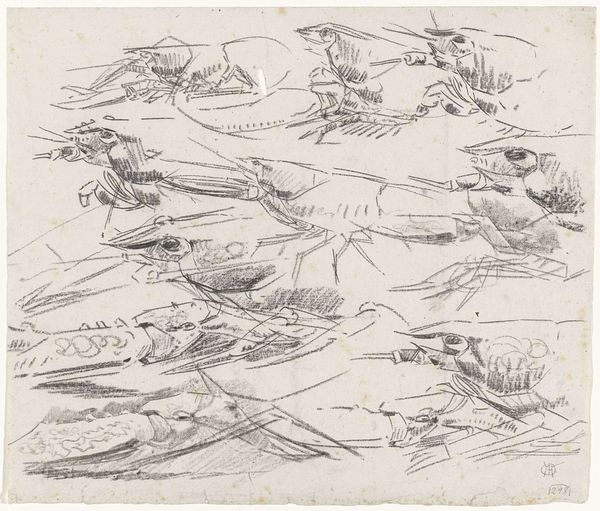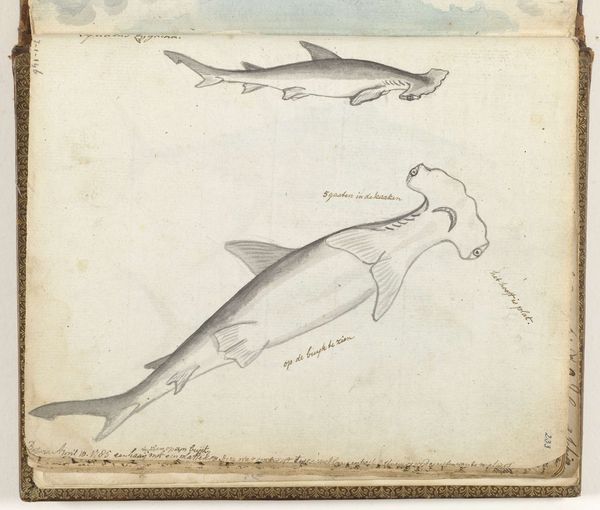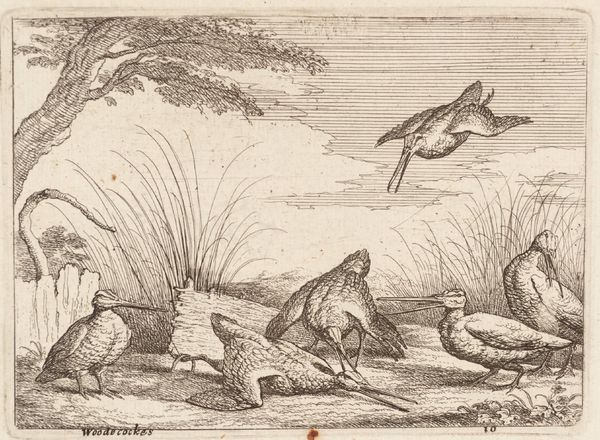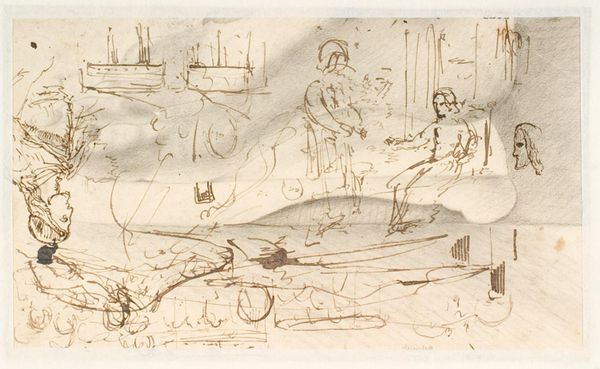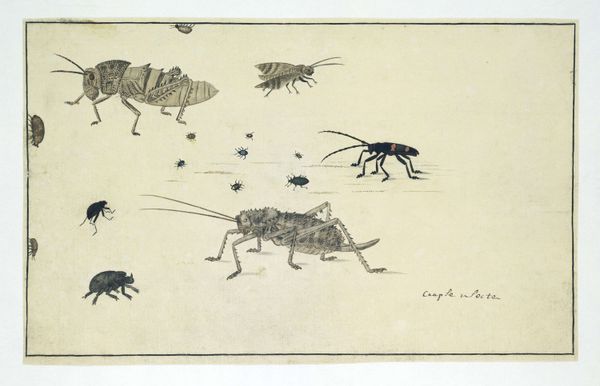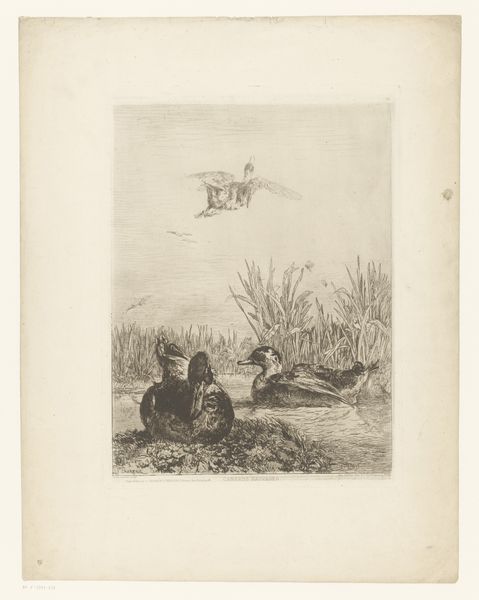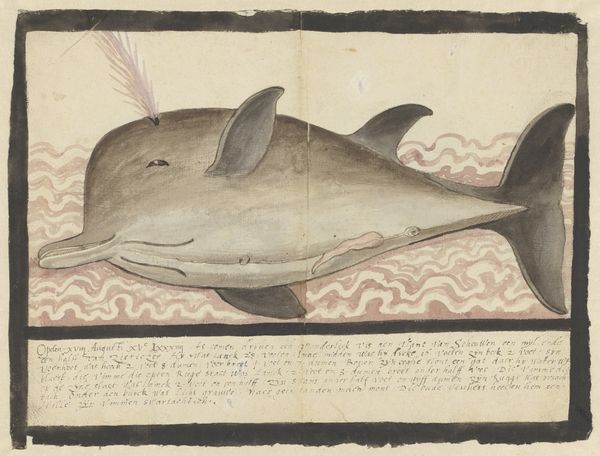
drawing, watercolor, ink
#
drawing
#
ink painting
#
botanical illustration
#
watercolor
#
ink
#
botanical drawing
#
watercolour illustration
#
naturalism
#
botanical art
Dimensions: height 660 mm, width 480 mm, height 178 mm, width 298 mm, height 146 mm, width 298 mm
Copyright: Rijks Museum: Open Domain
Curator: Let's discuss "Beetles and Grasshoppers," a drawing possibly made between 1777 and 1786 by Robert Jacob Gordon. It employs watercolor and ink, a common combination for naturalistic studies during that era. Editor: Well, my first thought is... peaceful. Oddly calming. Even though insects are generally presented as frantic things, there’s this still, quiet quality to the whole composition. Like a midday desert scene, or a slow dream. Curator: Exactly. Gordon's naturalism really comes through. As a military man and explorer for the Dutch East India Company, his detailed observations provided valuable insight into the Cape region’s flora and fauna. Editor: I can see that attention to detail, even the quirky shading on the grasshopper's carapace makes them more creature than monster, but they still feel… objective, distant. There's an alien quality, they're these big staring entities, that can unsettle the viewer. Curator: That tension, between the objective and the strange, is so key to natural history drawings. Consider how scientific expeditions relied on imagery to communicate the unfamiliar. The engravers and publishers then shaped its reception. Editor: I can get behind that. It makes me think about scale too, and how relative that is. The bugs loom here. If there wasn't any indication, a horizontal green line that anchors the picture, for what counts as "land," you could be floating amongst weird life in some huge, planetary scheme. It also gives me a bit of anxiety about perspective in illustrations. Curator: Gordon's choice of medium really reinforces that attention to scientific recording. The layered watercolor creates tonal variation which mimics real light conditions, providing this texture for later engravings. It helped these images circulate in scientific circles and with the wider public. Editor: I get such a unique feeling from art like this, from scientific records of past centuries, knowing they show that somewhere, things might've flourished. You can see them existing at some stage, in all this complexity that's mostly vanished by now. Curator: Indeed. Thinking about this image reminds us how much exploration was connected to the development of knowledge. Gordon contributed to a collective understanding of natural systems that remains relevant. Editor: For me, this simple sketch, reminds me of looking closely, and also of knowing that everything you're carefully seeing can vanish sooner than later, that observation turns into a record of extinction as well.
Comments
No comments
Be the first to comment and join the conversation on the ultimate creative platform.
